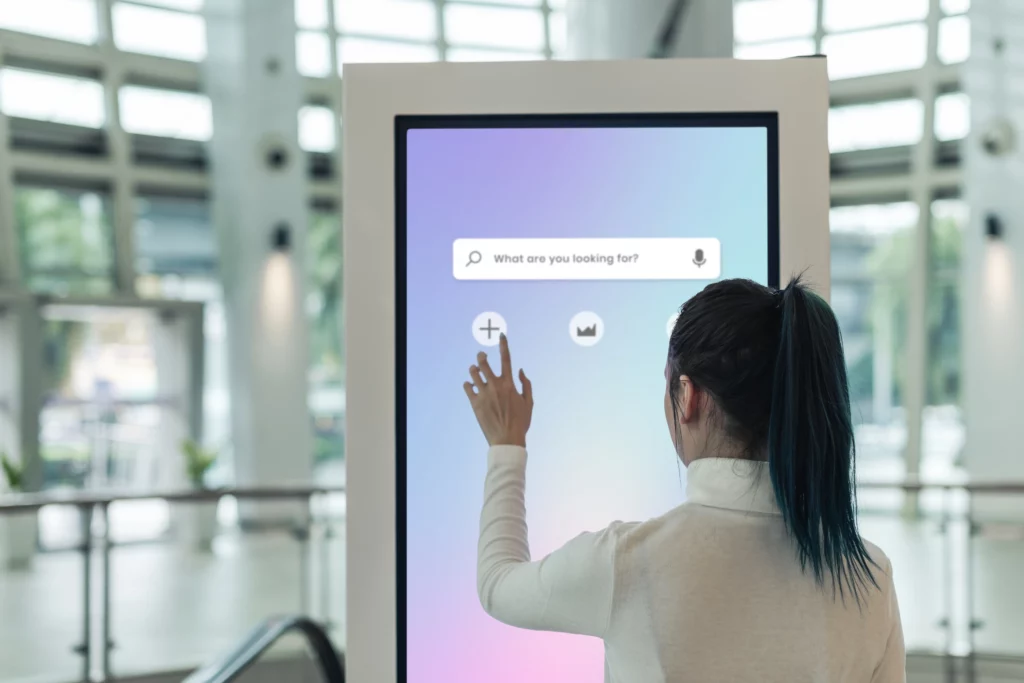Digital Signage Setup: Your Ultimate Guide
In today’s paced world effectively getting your message across is incredibly important. Digital signage has become a convenient tool for engaging and informing your audience. Whether you’re a business owner, marketer, or event organizer it’s crucial to understand how to set up Digital signage that grabs attention and communicates your objectives.
This comprehensive checklist will guide you through the steps to ensure that your signage goes beyond being a display and becomes a communication tool tailored specifically to your goals. From defining your objectives to choosing the software each step aims to simplify the process and make it accessible, for everyone involved. So, let’s understand in detail everything about digital signage.
What is Digital Signage?
Digital signage is essentially the version of billboards utilizing LED screens to enable brands to effectively communicate with their target audience. Experts predict that the signage market will reach $29.6 billion by 2023 highlighting the effectiveness of this marketing approach and the increasing number of brands embracing it to showcase a range of content.
The beauty of signage lies in its versatility. It allows brands to incorporate captivating visuals, videos, designs (including touchscreen functionality), and virtually any creative element that their team can conjure up.
What sets signage apart from advertising methods is its modernity and abundance of features. Brands can truly experiment with their content ensuring an experience for their audience and garnering a positive response overall.
Importance of Digital Signage
As we proceed further let’s understand how important signage can be for brands and businesses to promote themselves and engage with the audience.
- Catchy and Attention Grabbing: Digital signage has the ability to instantly capture people’s attention. Multiple studies have demonstrated its potential to enhance brand recall by, up to 83%. That’s truly impressive when it comes to grabbing eyeballs!
- Dynamic and Versatile: It’s not about displaying images. With signage you can showcase captivating videos and interactive displays allowing for an experience. Additionally, updates can be effortlessly incorporated, offering flexibility in conveying your message.
- Projected Market Growth: Brace yourself for this insight. Industry experts predict that the digital signage market will skyrocket to $29.6 billion by 2023! This remarkable growth speaks volumes about its effectiveness and widespread adoption across industries.
- Environmentally Friendly Choice: By embracing signage you’re not embracing cutting-edge technology but also making an environmentally conscious choice. Compared to print media significantly reduces paper waste making it a responsible option for businesses concerned about the environment.
- Targeted Communication: Tailoring your content to audiences or specific locations becomes effortless with the use of digital signage. This empowers you with the ability to deliver your message to the people at exactly the right time.
- Real-Time Updates: Need to share information? No need to worry! Digital signage allows for updates ensuring that your audience always has access to up-to-date information literally at their fingertips.
Examples of Digital Signage
To give you a better understanding of digital signage we’ve curated some of the best examples:
Interactive Wayfinding Kiosks
Imagine walking into a shopping mall or a busy airport and instead of struggling to read a fixed map you come across an interactive kiosk. These tech wayfinding stations not only help you find your destination but also provide valuable information, about shops, services and events. It’s like having your guide right at your fingertips making your experience better and removing any confusion.
Menu Boards in Restaurants
Have you ever been to a restaurant where the menu seems to change? That’s the beauty of menu boards. Restaurants are utilizing digital signage displays to showcase their menus in a way with visually appealing images of their delicious dishes. This not grab, also allows for easy updates ensuring that the offerings, prices or promotions can be changed in real time without the need for printing new menus.
Digital Out-of-Home Advertising
Billboards are getting an upgrade with out of home (DOOH) advertising. Imagine seeing captivating ads on screens in iconic locations like Times Square that seamlessly rotate through different content. Outdoor digital signage completely transforms billboards into showcases empowering advertisers to connect with their target audience through personalized and time sensitive messages.
Corporate Communication Displays
Within office spaces digital signage serves as more than a touch – it becomes an essential communication tool. In offices or common areas, you’ll often find digital screens that display internal news, updates and announcements. These screens help keep employees informed and add a touch to the usual ways companies communicate with their staff.
Healthcare Information Screens
Hospitals and healthcare centers are increasingly adopting signage to improve the experience, for patients. In waiting areas digital screens are utilized to share information regarding services estimated wait times and health advice. Additionally, these screens can be used to display emergency alerts or highlight announcements creating an informative and efficient environment, for patients and visitors.
Check Out Our Free Video Wall Design and Proposal Templates
A Detailed Checklist to Effectively Set Up Your Digital Signage
We have curated a checklist for businesses to learn and understand how to go about setting up digital signage make sure you follow the steps:
1. Understanding the Purpose of Signage:
The first step should be to define the objectives of your digital signage project. For that, you will have to identify the target audience very clearly, set realistic goals, and establish KPIs. This is the very basic step. Consider it as the foundation step for effective communication that is the backbone for getting you the desired results.
2. Selecting the Right Frequency for Advertisements:
Digital signage is expensive, do you agree? So you will have to plan strategically to make optimum utilization. It’s important to take control of the content’s timing and frequency this way you promote what you want and get the maximum benefit in the same duration. The best way is to use an automation tool that can help you plan in advance and schedule the content.
3. Determining Content to Showcase:
To come up with the best content to showcase the best way is to opt for a variety of formats, such as images, videos, posters, and anything unique that grabs the attention of anyone passing by. Variation in the content not only helps you share more, it also keeps the audience engaged and that is the smartest way to curate a content stack for display.
4. Creating Compelling Content:
Creating attractive content is the key to success here. Let creativity take the front seat and ensure that your team has the freedom to come up with unique ideas that the audience can relate to and stick with. Here you have the freedom to choose the format so take advantage of it. Finally, you should know if the content will resonate with the audience or not.
5. Strategic Placement of Digital Signage:
Just putting up digital signage anywhere is literally a waste of money, here comes the role of understanding the audience. When you know the audience, you are catering to you will know exactly the right spot to place your digital signage. This will help you to optimally utilize the opportunity to promote and get inside the heads of relevant audiences.
6. Choosing the Digital Signage Software:
You can literally save yourself from a lot of struggles by just choosing the right digital signage software. XTEN-AV’s project management capabilities are at par. Software should help you in decision-making and keeping the process smooth. Our automated design and proposal software offers seamless transition and helps you maximize the benefit of digital signage.
AV Design Mastery + Winning Proposals = 10x Productivity!
- Automatic Cable Labeling & Styling
- 100+ Free Proposal Templates
- Upload & Create Floor Plans
- 1.5M Products from 5200 Brands
- AI-powered ‘Search Sense'
- Legally Binding Digital Signatures
Conclusion
It is essential to pay attention to the details when implementing a communication strategy, for installing signs. To create experiences, we need to establish objectives, decide on ad frequencies, carefully curate content, thoughtfully organize placements and make use of tools like XTEN AV. Digital signage is not just a passing trend; it adapts to the changing needs of communication.
When developing a digital signage system our focus should be on incorporating elements and planning meticulously. This checklist offers strategies for transforming environments captivating audiences and effectively conveying messages. As static signs transform into storyteller’s viewers are left with a lasting impression.
Frequently Asked Questions (FAQ's)
Digital signage refers to the use of displays such as LED or LCD screens display to deliver content. It goes beyond signs by offering interactive visuals, videos, and real-time updates for effective communication.
The process of implementing signage involves setting objectives, selecting appropriate content, determining optimal placements and utilizing efficient software. It encompasses planning, creating, scheduling, and managing content to ensure communication that captivates audiences with timely information.
The main purpose of signage is to communicate. Its aim is to engage target audiences, enhance brand visibility and convey messages with clarity. Whether in environments, settings or public spaces alike the goal is to create compelling and memorable experiences through dynamic visual content.
Digital signage has proven effective in increasing brand recall by up to 83%. Its dynamic nature captures attention effectively making it a powerful tool for conveying messages. The versatility it offers along with real-time updates and eco-friendly aspects contribute towards its adoption across industries ensuring impactful communication.



